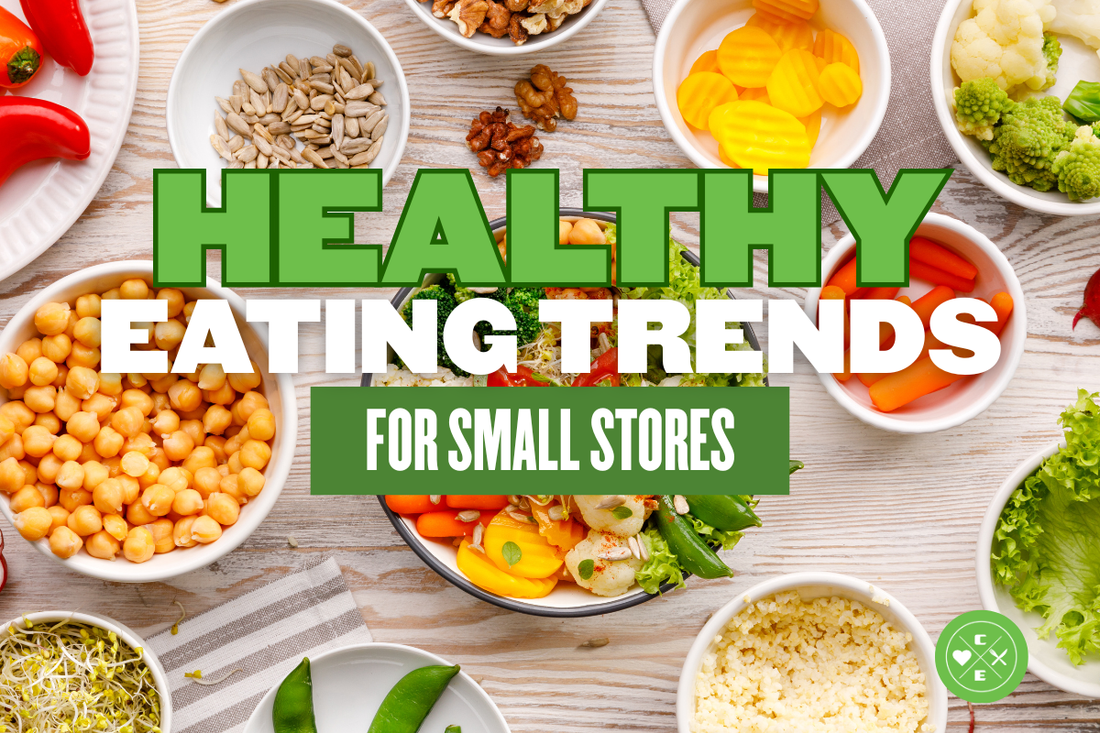
Healthy Eating Trends for Small Stores (2026): What to Stock and How to Sell It
Share
Wellness is table stakes—now it’s about the right mix, clear benefits on-shelf, and simple ops. Use this guide to turn 2026 trends into SKUs that actually move in one or two doors.
Why healthy convenience matters now
- Mainstream wellness: high-protein, plant-forward, and portion-controlled options are no longer niche.
- Clear benefits win: shoppers choose fast, but they scan for protein grams, calories, and diet tags.
- Small-space advantage: focused mixes sell better than everything-for-everyone freezers.
If you’re adding grab-and-go, see also: Prepared Foods That Sell: A 2026 Small-Store Playbook and Convenience Retail Trends 2026.
Top 6 healthy eating trends shaping small-store assortments
1) High-protein, macro-forward meals
Single-serve bowls and breakfasts with 20–40g protein. Clear macro labels reduce decision time.
2) Plant-forward (not just vegan)
Veggie-first bowls with legumes or plant proteins; great for flexitarians and “lighter lunch” buyers.
3) Portion control
Smaller meals/snacks that satisfy without waste. Works for wellness goals and lunch crowds.
4) Global comfort with heat (and “swicy”)
Bold flavors—buffalo, gochujang, curry, hot-honey—create discovery and repeat purchases.
5) Clean-label & allergen-friendly
Recognizable ingredients and tags like “Gluten-Free,” “No Artificial Sweeteners,” “Dairy-Free.”
6) Better-for-you treats
Lower-sugar desserts, protein ice creams, and portioned sweets for “permission to indulge.”
Translate trends into a 12-SKU starter mix
- Meals (5): 2 comfort (e.g., pizza/burrito), 2 better-for-you (protein bowl, plant bowl), 1 spicy/global feature.
- Snacks (4): minis/bites (dumplings, pizza rolls, egg bites, hummus snack boxes).
- Desserts (2): 1 indulgent staple, 1 better-for-you (lower sugar / higher protein).
- Flex (1): seasonal or “new flavor” rotation.
Browse our catalog: see products (wholesale pricing visible when logged in).
Shelf tags & signage that convert (AEO)
- Benefits first: “25g Protein”, “Under 400 Calories”, “Gluten-Free”, “Plant-Based”.
- Daypart blocks: breakfast vs. lunch; color-code tag borders to speed choices.
- One-liner prep: “Microwave 3–4 min”; reduce friction for first-time buyers.
Price architecture & pack sizes
- Good/Better/Best: anchor a value meal, step up to macro-rich bowls, and a chef-style premium.
- Ladder by benefits: protein grams, diet claims, and premium ingredients support higher price points.
- Case sizes: favor smaller cases and mixed packs to learn quickly with less risk.
Ops: rotation, waste, and cold chain
- FIFO daily: front and face; keep a two-thirds full look to avoid “picked-over.”
- Waste plan: daily counts + last-day markdowns; right-size reorders by POS data.
- Cold chain: temp logs and clear date marks; follow local regulations for prepared foods.
Promos & cross-merch ideas
- Multi-buy: 2-for on lunches; 3-for on snack minis.
- Drink add-on: “Add a drink for $X” with protein bowls or spicy items.
- New flavor drop: rotate one spicy/global SKU monthly; announce at the counter.
Need a prepared set too? Read Prepared Foods That Sell for daypart mixes and a 7-day launch checklist.
Get approved & browse products
Apply for a retailer account to unlock pricing and place orders, or log in if you’re already approved.
Catalog: see products (case-ready SKUs; pricing shown when logged in).
FAQs
What if I only have a single-door freezer?
Run 9 SKUs: 4 meals, 3 snacks, 2 desserts. Keep one spicy/global feature and one better-for-you anchor.
Do protein and calorie callouts really matter?
Yes—benefit-first tags reduce decision time and support repeat buys from wellness-focused shoppers.
How do I rotate without creating waste?
Change just one SKU per month (usually the spicy/global feature), keep the rest stable, and use last-day markdowns.
